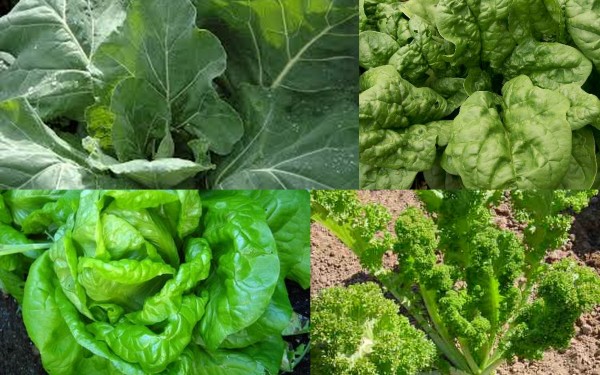
At this time of the year, (especially for those in the southern states) it may be a while still before warm-season crops are an option. While that knocks things like beans, peppers, and tomatoes out of the equation (for the time being), you can get going with your cool-season crops now.
Examples of what we’re talking about are turnips, radishes, onions, carrots, broccoli, and lettuce, all of which can handle a bit of cold but won’t thrive in hotter conditions. These crops will be replaced by the warm-weather plants around June. At the first sign of workable soil, get to work on your cool-season gardening.
Spinach
Around 20-30 days after sowing, the baby spinach leaves will be ready to be harvested for salads, while the large leaves can be harvested continually until the hot weather begins to come around. Entire spinach plants may be harvested 25-50 days after sowing, and, if planted in the shade, may even continue growing through the summer months.
When contemplating where to plant your garden, know that this crop can be grown in both full and partial sun. If winters aren’t particularly harsh in your area, spinach can also be grown in the later fall months to be harvested in the Spring, and can even be ‘overwintered’ in a cold frame. In addition to being low-maintenance, spinach is full of essential nutrients like calcium, iron, protein, and beta-carotene.
Kale
No matter your lifestyle or diet plan, the odds are good that you’ve heard all the rage about Kale. Noting its natural anti-inflammatory properties, it’s also packed with vitamin K, iron, and antioxidants like vitamin C, calcium, beta-carotene, flavonoids, and carotenoids. Needless to say, it’s considered a bit of a ‘power green’ and everyone’s talking about it.
Also able to grow in full or partial sun, kale plants can be propagated from the seed and must be planted 12-36 inches away from one another. Leaves can be picked individually, and the plant will continually replace them. Baby greens will be ready to be harvested around 20-30 days after planting, and the mature leaves 30-40 days later.
Kale can be added to soups, stews, stir-fries, steamed vegetable dishes, salads, or just thrown as a garnish; keep in mind that the color and flavor are superior when the temperatures are frosty.
Chives
A chive plant is a perennial herb and can be harvested in early spring as soon as leaves begin to appear. It can be grown by division or by seed, and must have 8-12 inches between it and any other plants. Chive plants are low-maintenance, and will attract birds and bees while being deer-resistant. The leaves produce a classic chive flavor, but the late spring blooms will taste more like onions.
Lettuce
Lettuce produces the best results in cool weather, as it bolts and becomes bitter in the heat. It doesn’t require much space to grow either, and so it can easily be planted in containers. The amount of space required to plant lettuce varies on the type of lettuce you choose, so plant your seeds 2-12 inches apart as soon as the soil is workable. To extend your harvest, plant new seeds every three weeks until late spring, and again in late summer to provide produce for the fall.
By growing your own lettuce you’ll not only learn of the multiple benefits, but you’ll also discover which kinds you prefer. Make sure to study up on whatever type you choose, as lettuce can be ruined not only by excessive heat, but also by excessive cold.

